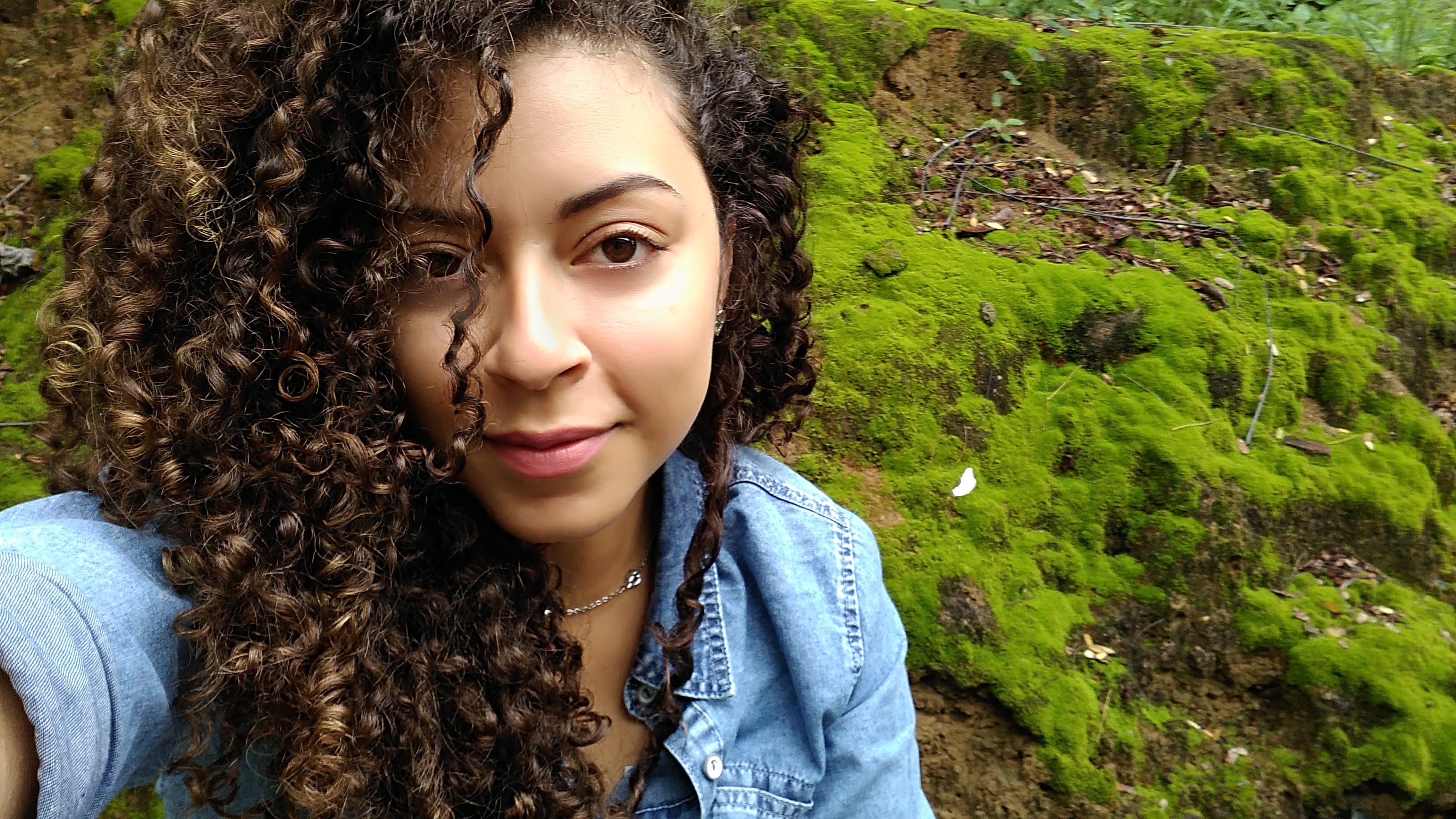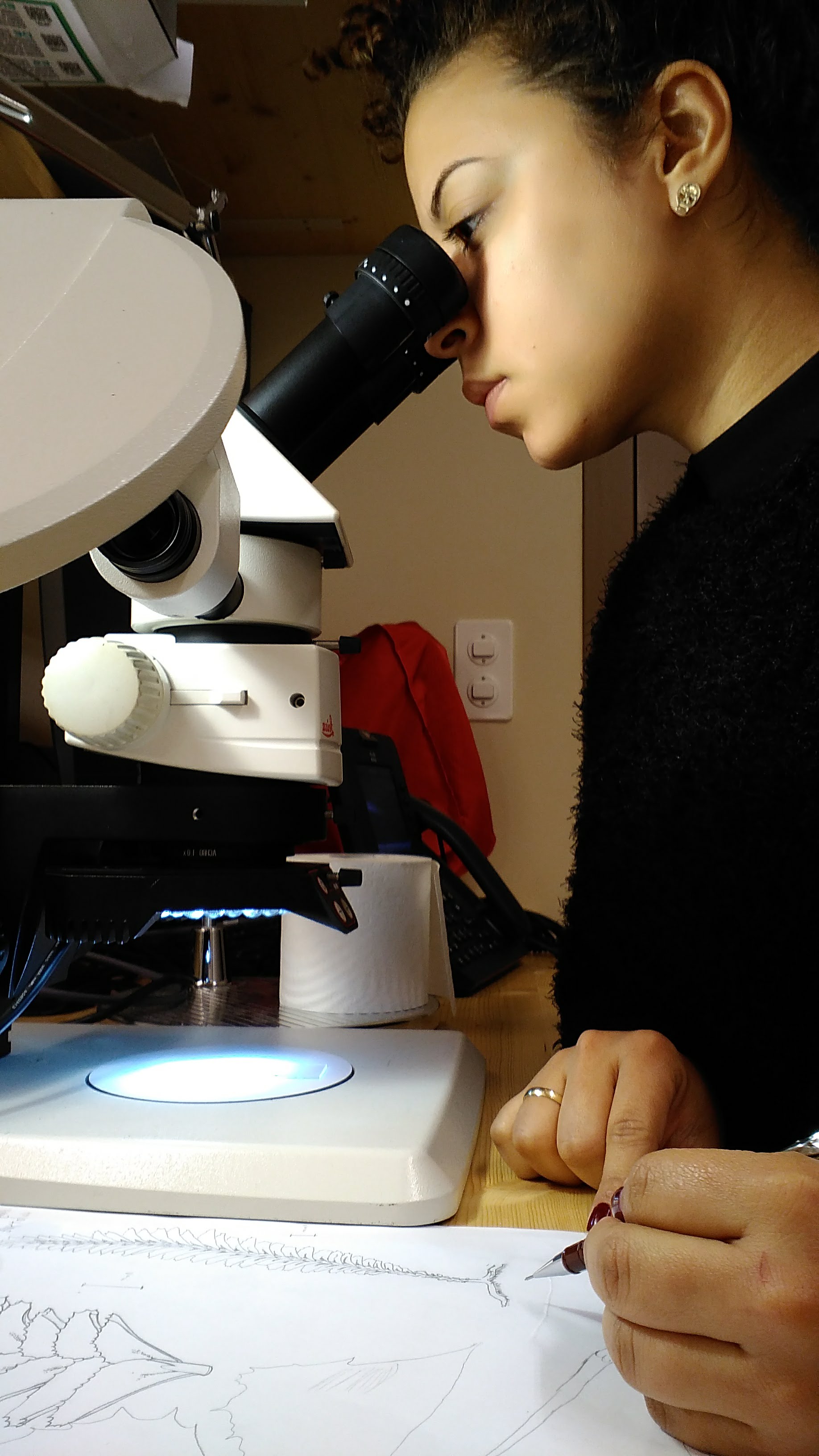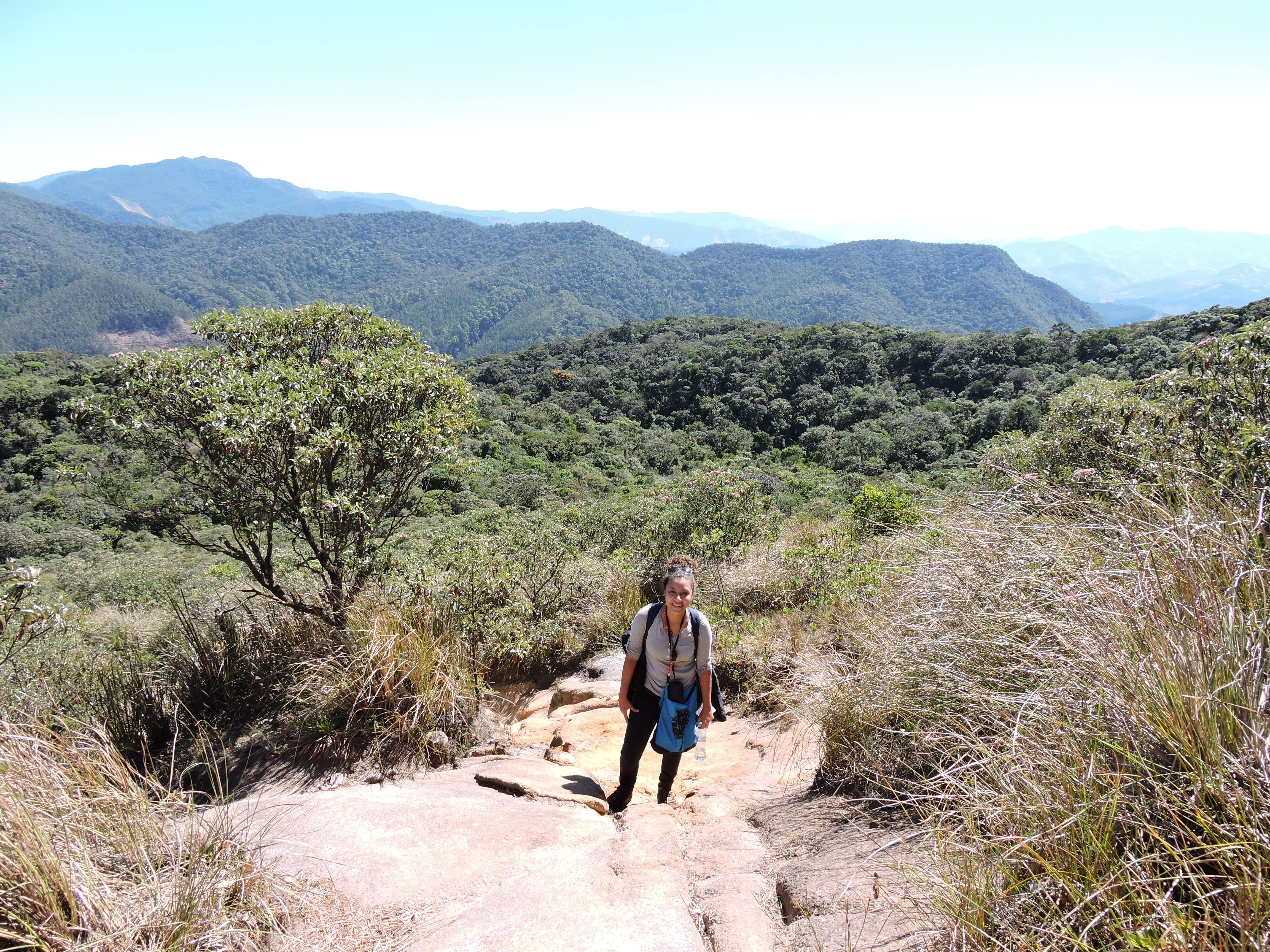
Eu nasci em Ilhéus, uma das primeiras cidades a serem fundadas no Brasil. É uma cidade litorânea, onde existem belíssimas paisagens, e uma rica flora, mesmo que seriamente antropizada. Desde pequena, sempre me interessei por plantas, principalmente pelas flores, que sempre me encantaram. No entanto, o interesse pelas briófitas só ocorreu a partir da metade do meu curso de licenciatura em Biologia na Universidade Estadual do Sudoeste da Bahia (UESB). Inicialmente, senti-me frustrada com a Botânica, pela forma como costumava ser ensinada nas escolas de ensino médio do Brasil, e não queria fazer pesquisas sobre o assunto. Mas ao ingressar na faculdade, comecei a me apaixonar por essa ciência, inicialmente dedicando-me ao estudo das Pteridófitas. Um amigo, o Dr. Anderson Ferreira Pinto Machado teve o papel fundamental de me instigar a olhar para as briófitas. Quando comecei a olhar para as briófitas em campo, e a ter curiosidade de conhecer aquelas pequenas plantas, deparei-me com um microscópico mundo novo. Sentia que estava lidando com a história do mundo, manipulando plantas tão antigas e excelentes na tarefa de persistirem na natureza, mesmo com suas limitações. Encantei-me com as adaptações morfofisiológicas, com suas formas e cores. Percebi que muitas pessoas não as viam em campo, e que no Brasil existia (e ainda existe) uma lacuna sobre o conhecimento das briófitas. Isso foi em 2010.
Na faculdade que estudei a graduação, não havia professores especializados em briófitas, e para aprender sobre elas, me inscrevi em um curso de verão oferecido pelo briólogo Prof. Dr. Cid José Passos Bastos na Universidade Federal da Bahia (UFBA). Com o que aprendi nesse curso de verão, pude desenvolver minha primeira pesquisa sobre a diversidade de briófitas de um fragmento de mata urbano em Vitória da Conquista, bahia, Brasil, sob a orientação da Profa. Dra. Cecília Oliveira de Azevedo (Orquidóloga – UESB). Ao terminar a Licenciatura em Biologia, em 2013, ingressei imediatamente no Mestrado na Universidade Estadual de Feira de Santana, sob orientação do Prof. Dr. Luis Pascholati Gusmão (Micólogo-UEFS) e co-orientação da Profa. Dra. Emilia de Brito Valente (Brióloga – UEFS). Minha pesquisa de mestrado objetivava conhecer as espécies de briófitas que ocorriam em uma área de ecótono (transição entre a floresta atlântica e a caatinga) no estado da Bahia, no Brasil. Durante minha pesquisa de mestrado coletei muitas espécies do gênero Plagiochila, e acabei me interessando pelo grupo. Assim, em 2015, ao iniciar o doutorado, fui fortemente influenciada pelo Prof. Dr. Denilson Fernandes Peralta (Briólogo – IPA), a iniciar uma pesquisa sobre as espécies de Plagiochila que ocorrem no Brasil. Desde o começo da pesquisa percebi uma necessidade urgente de identificar os espécimes das várias coleções de briófitas brasileiras, e de também revisar os tipos nomenclaturais das espécies citadas para o país.
Defendi o doutorado em 2019, e muitos dos resultados da minha tese estão sendo enviados para publicação. Atualmente atuo como professora na Secretaria de Educação do Estado da Bahia, no Brasil, orientando pesquisas de iniciação científica de estudantes de ensino médio da rede pública de ensino. Recentemente tive o privilégio de me tornar mãe, e tenho tentado equilibrar as funções da maternidade, da pesquisa e do ensino da melhor forma possível.

I was born in Ilhéus, one of the first cities to be founded in Brazil. It is a coastal city, where there are beautiful landscapes, and rich flora, even if seriously anthropized. Since I was a kid, I had always been interested in plants, especially flowers, which had always enchanted me. However, the interest in bryophytes only occurred after the middle of my degree in Biology at the Universidade Estadual do Sudoeste da Bahia (UESB). Initially, I was frustrated with Botany, the way it used to be taught in Brazilian high schools, and I didn’t want to research this area of science. But upon entering college, I began to fall in love with this science, initially dedicating myself to the study of Pteridophytes. A friend, Dr. Anderson Ferreira Pinto Machado, encouraged me to look at bryophytes. When I started looking at bryophytes in the field and being curious to know these little plants, I came across a microscopic new world. I felt that I was dealing with the history of the world, manipulating plants so ancient and excellent in the task of persisting in nature, despite its limitations. I was enchanted by the morphophysiological adaptations, with their shapes and colors. I realized that many people did not see them in the field and that in Brazil there was (and still is) a gap in the knowledge of bryophytes. This was in 2010.
At the college I studied for graduation, there were no professors specializing in bryophytes, and to learn about bryophytes, I signed up for a summer course offered by Prof. Dr. Cid José Passos Bastos at the Universidade Federal da Bahia (UFBA). With what I learned in this summer course, I was able to develop my first research project on the diversity of bryophytes in a fragment of the urban forest in Vitória da Conquista, Bahia, Brazil, under the guidance of Prof. Dr. Cecília Oliveira de Azevedo (Orchidologist – UESB). Upon finishing my degree in Biology, in 2013, I immediately entered the Master’s degree at the Universidade Estadual de Feira de Santana (UEFS), under the guidance of Prof. Dr. Luis Pascholati Gusmão (Mycologist-UEFS) and co-supervision of Prof. Dr. Emilia de Brito Valente (Bryologist – UEFS). My master’s research aimed to know the species of bryophytes that occurred in an ecotone area (transition between the Atlantic Forest and the Caatinga) in the state of Bahia, Brazil. During my master’s research, I collected many species of the genus Plagiochila, and I became interested in the group. Thus, in 2015, when starting my doctorate, I was strongly influenced by Prof. Dr. Denilson Fernandes Peralta (Bryologist – IPA), to start research on Plagiochila species that occur in Brazil. Since the beginning of the research, I have noticed an urgent need to identify specimens from the various collections of Brazilian bryophytes, and also to review the nomenclatural types of the cited species for the country.
I defended my Ph.D. in 2019, and many of my thesis results are being submitted for publication. I currently work as a teacher at the Department of Education of the State of Bahia, in Brazil, guiding introductory scientific research for high school students in the public school system. Recently I had the privilege of becoming a mother and have been trying to balance the roles of motherhood, research, and teaching as best I can.
